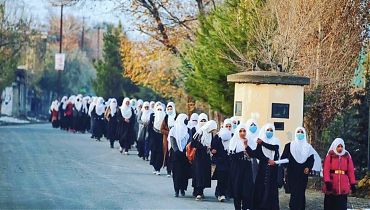
Three years after the Taliban’s return to power in Afghanistan, the regime is now facing a combination of domestic and international challenges, signaling that the foundations of their governance may be crumbling. While the Taliban initially sought to project an image of stability, a series of political, economic, security, and social crises reveal that the group is grappling with deep-rooted difficulties.
This report examines ten key factors contributing to the instability of the Taliban government.
1. Internal Divisions and Leadership Challenges
Though the Taliban initially came to power with relative unity, recent reports suggest growing internal rifts among the group’s various factions. Organizational tensions, power struggles, and disagreements over major decisions have affected the Taliban’s ability to govern effectively. In some cases, these disputes have led to reshuffling of officials and even the removal of prominent Taliban figures.
2. Economic Crisis and Widespread Poverty
One of the most pressing issues facing the Taliban is Afghanistan’s severe economic crisis. The freezing of national assets, the suspension of international aid, and a decline in foreign trade have severely impacted the country’s economy. According to international organizations, over 90% of Afghans are living in extreme poverty, and unemployment is rising rapidly.
3. Lack of International Recognition
The Taliban have yet to gain international legitimacy. No major country has officially recognized them as the legitimate government of Afghanistan. This lack of recognition has denied the Taliban access to financial resources and sustainable economic partnerships, exacerbating internal challenges.
4. Social Restrictions and Growing Public Dissatisfaction
Public dissatisfaction has been fueled by the Taliban’s widespread social restrictions. Harsh policies targeting education, employment, and the media have curtailed personal and social freedoms. These measures have triggered widespread backlash both inside and outside of Afghanistan, increasing public opposition to the Taliban.
5. Rising Protests and Civil Disobedience
Over the past three years, public protests and civil disobedience against the Taliban’s policies have grown. Civil groups, particularly women’s organizations, have organized peaceful demonstrations to express their opposition. These protests have not only increased security costs for the Taliban but have also challenged their domestic legitimacy.
6. Emergence of Armed Resistance Groups
Since the Taliban’s return to power, armed resistance groups have increased their activities across various regions of Afghanistan. These groups have conducted military operations against the Taliban, leading to an uptick in armed conflicts in certain areas. Beyond the military threat, these resistance movements send a clear message of opposition to Taliban rule to the international community.
7. Failure to Manage Security Crises
The Taliban had promised to ensure nationwide security, but the rise in terrorist attacks and general insecurity has cast doubt on this claim. Explosions, targeted assassinations, and the growing presence of extremist groups have created new security challenges for the Taliban, which they are struggling to manage.
8. Media Restrictions and Declining Government Transparency
The Taliban have imposed broad restrictions on media and journalists, aiming to control critical narratives. However, this approach has led to reduced transparency in governance and eroded public trust in the group’s performance. In the absence of independent media, accurate information about the country’s situation is hard to come by, though international reports continue to highlight serious governance issues within the Taliban regime.
9. Internal Legitimacy Crisis and Declining Public Support
Over time, public support for the Taliban has waned. While the group initially garnered some backing by promising security and economic stability, their failure to deliver on these promises has led many Afghans to distance themselves from the regime. This decline in internal support could further destabilize the Taliban’s government.
10. Diplomatic Challenges and Reduced Regional Cooperation
In recent years, some neighboring countries that initially maintained close ties with the Taliban have altered their policies. Diplomatic disputes over border issues, trade, and security cooperation have led to reduced engagement between the Taliban and their regional neighbors. This diminished cooperation has negatively impacted the group’s economic and political standing.
Conclusion
Following their return to power, the Taliban attempted to present themselves as a stable and authoritative government. However, evidence suggests that the group is facing deep-seated challenges and multiple crises. From internal divisions and an economic downturn to public dissatisfaction, armed resistance, and security issues, the Taliban government is struggling on multiple fronts.
Unless the group implements fundamental reforms in its policies and finds solutions to its current crises, its future in Afghanistan remains uncertain.




